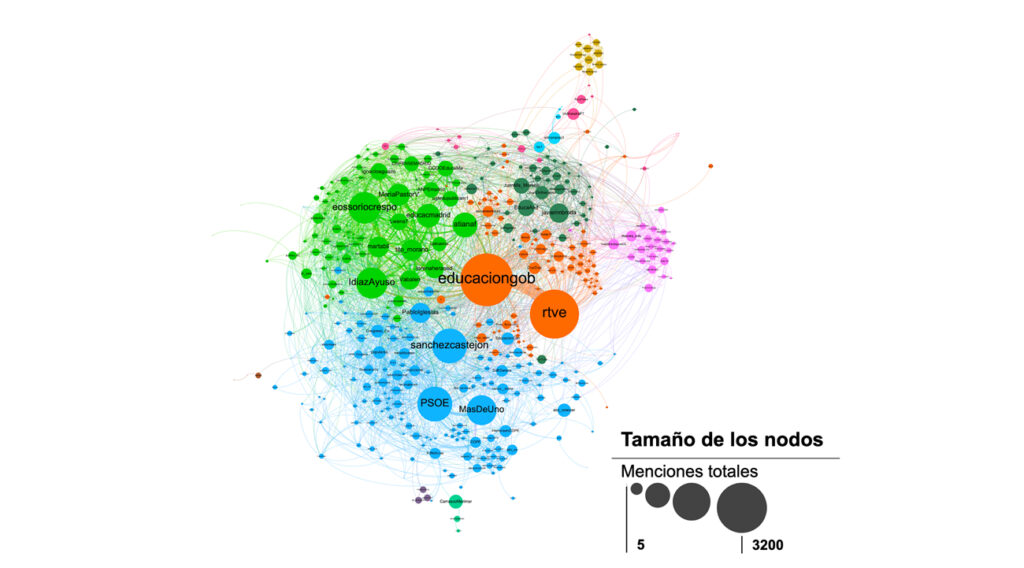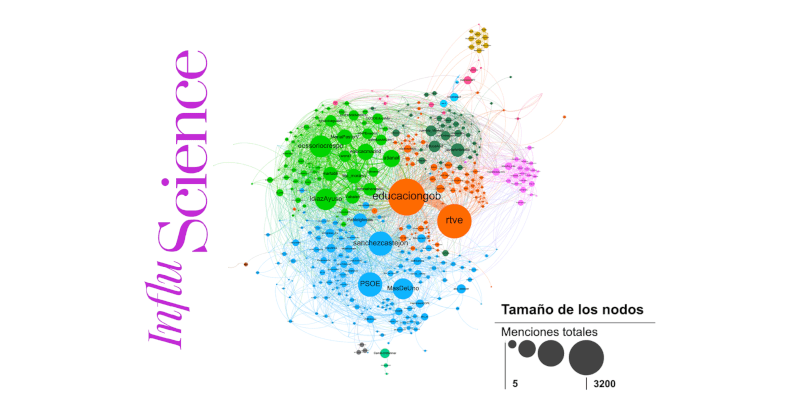We recently published «International trends in social network analysis», a chapter in «Research in Communication and Education: Theory and scientific practice». In it we provide a general introduction to social network analysis with a focus on the field of educommunication in particular. An approach that is useful for those who want to make use of social network analysis for the first time.
This is why we take a look at the whole process, giving as complete a picture as possible of the main elements involved. We take materials as a starting point, addressing the relevance of data, obtained from social media, and a good collection strategy and the preparation of network archives from it. We then focus on methods, reviewing everything from the tools with which to carry out the analysis to metrics and methods such as community detection and visualisation aspects.
Furthermore, we exemplify all this through a case study in which we retrieve the tweets about the LOMLOE (Organic Law of Education) discussion from 17 to 24 June 2020 and thereby generate a network of co-mentioned actors.

Download the article
Arroyo-Machado, W., Barroso-Hurtado, D., & Torres-Salinas, D. (2021). Tendencias internacionales sobre el análisis de redes sociales. En J. Gil-Quintana, J. L. Parejo, & C. Cantillo-Valero (Eds.), Investigar en Comunicación y Educación: Teoría y práctica científica (pp. 185-205). Tirant Lo Blanc. http://doi.org/10.5281/zenodo.5047157
